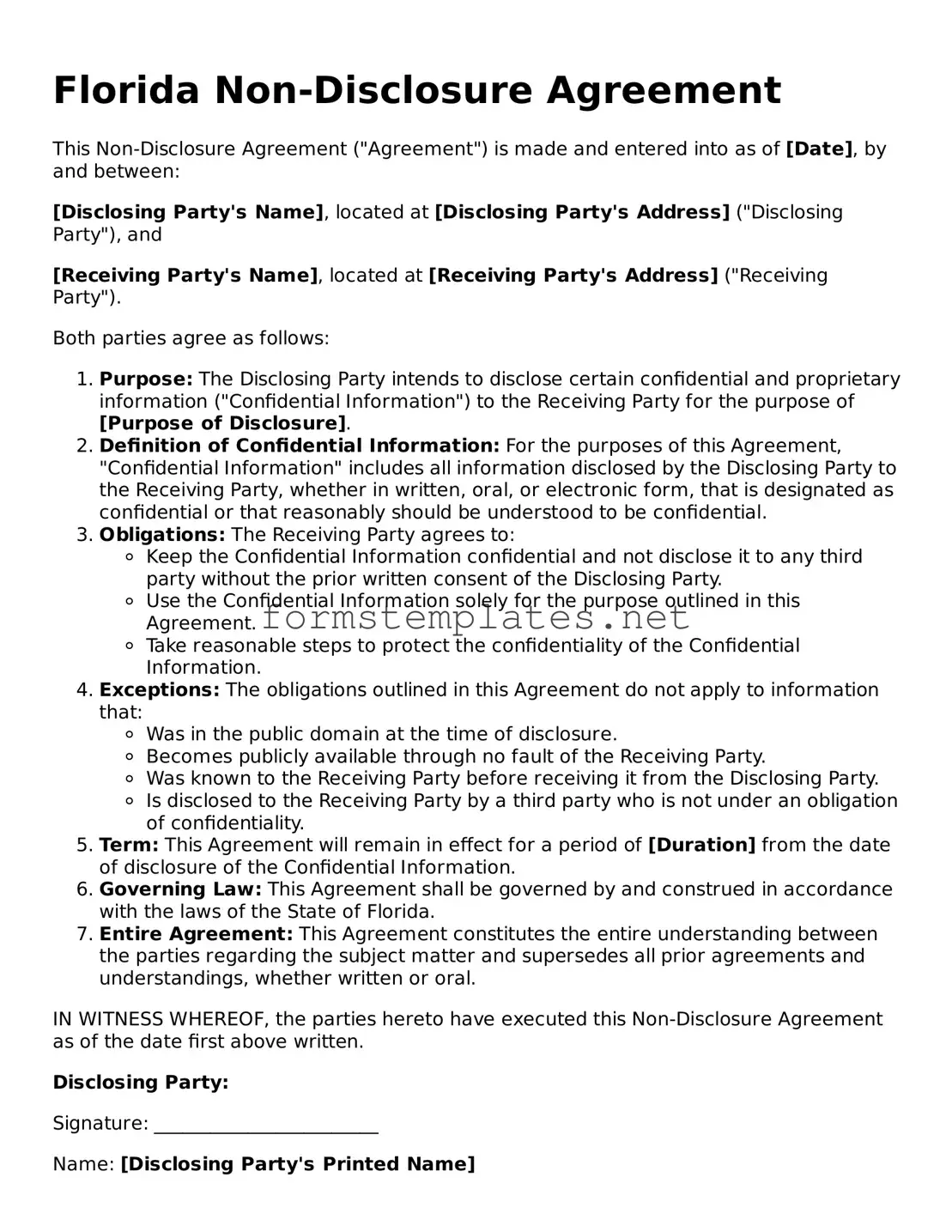What is a Florida Non-disclosure Agreement (NDA)?
A Florida Non-disclosure Agreement is a legal contract designed to protect confidential information shared between parties. This agreement ensures that sensitive information, such as trade secrets, business strategies, or proprietary data, remains confidential and is not disclosed to unauthorized individuals or entities.
Who typically uses a Non-disclosure Agreement in Florida?
NDAs are commonly used by businesses, entrepreneurs, and individuals who need to share sensitive information. This includes:
-
Business partners discussing potential collaborations.
-
Employees who may have access to proprietary information.
-
Contractors and vendors who require access to confidential data.
What are the key components of a Florida Non-disclosure Agreement?
A well-drafted NDA should include several important elements:
-
Definition of Confidential Information:
Clearly outline what constitutes confidential information.
-
Obligations of the Receiving Party:
Specify the responsibilities of the party receiving the information.
-
Duration of Confidentiality:
Indicate how long the information must remain confidential.
-
Permitted Disclosures:
List any exceptions where disclosure is allowed, such as legal requirements.
How long does a Non-disclosure Agreement last in Florida?
The duration of an NDA can vary based on the agreement between the parties. Generally, the confidentiality obligations can last for a specified period, often ranging from two to five years. In some cases, the obligation may continue indefinitely if the information remains confidential and valuable.
Can a Non-disclosure Agreement be enforced in Florida?
Yes, NDAs can be enforced in Florida courts, provided they are clear, reasonable, and not overly restrictive. If one party breaches the agreement, the other party may seek legal remedies, which can include monetary damages or injunctive relief to prevent further disclosure.
What happens if someone violates the Non-disclosure Agreement?
If a party violates the NDA, the injured party has several options. They can pursue legal action for breach of contract, which may result in financial compensation. Additionally, they may seek a court order to prevent further disclosure of the confidential information.
Is it necessary to have a lawyer to create a Non-disclosure Agreement in Florida?
While it is not strictly necessary to have a lawyer draft an NDA, consulting with a legal professional is highly recommended. A lawyer can ensure that the agreement is tailored to your specific needs, complies with Florida law, and effectively protects your interests.
Where can I find a template for a Florida Non-disclosure Agreement?
Templates for Florida NDAs are widely available online. However, it is crucial to choose a reputable source. Look for templates that are customizable and include all necessary components. You may also consider working with a lawyer to create a bespoke agreement that suits your unique situation.
